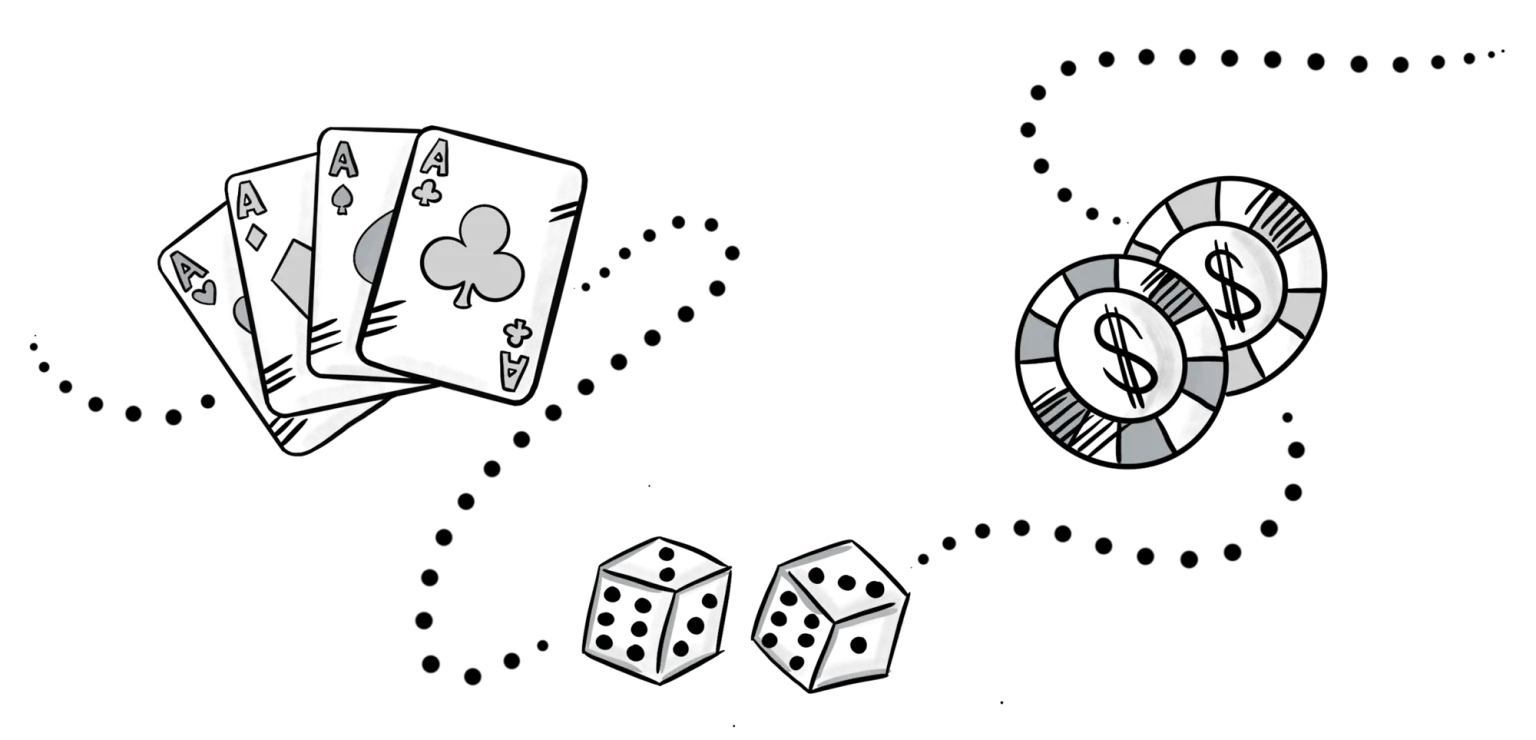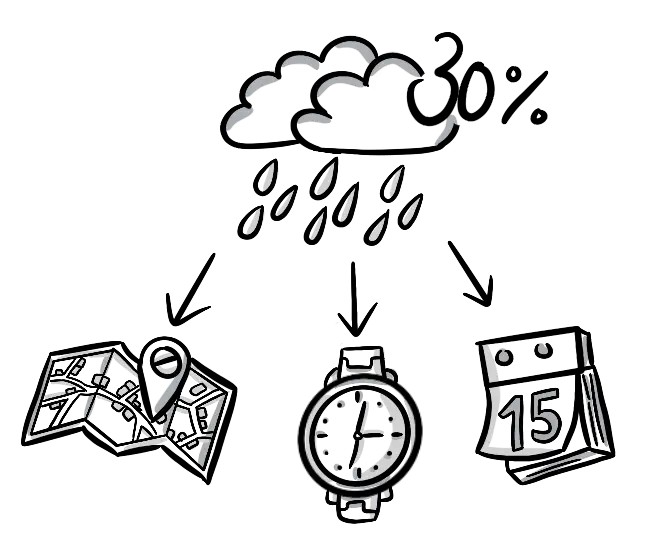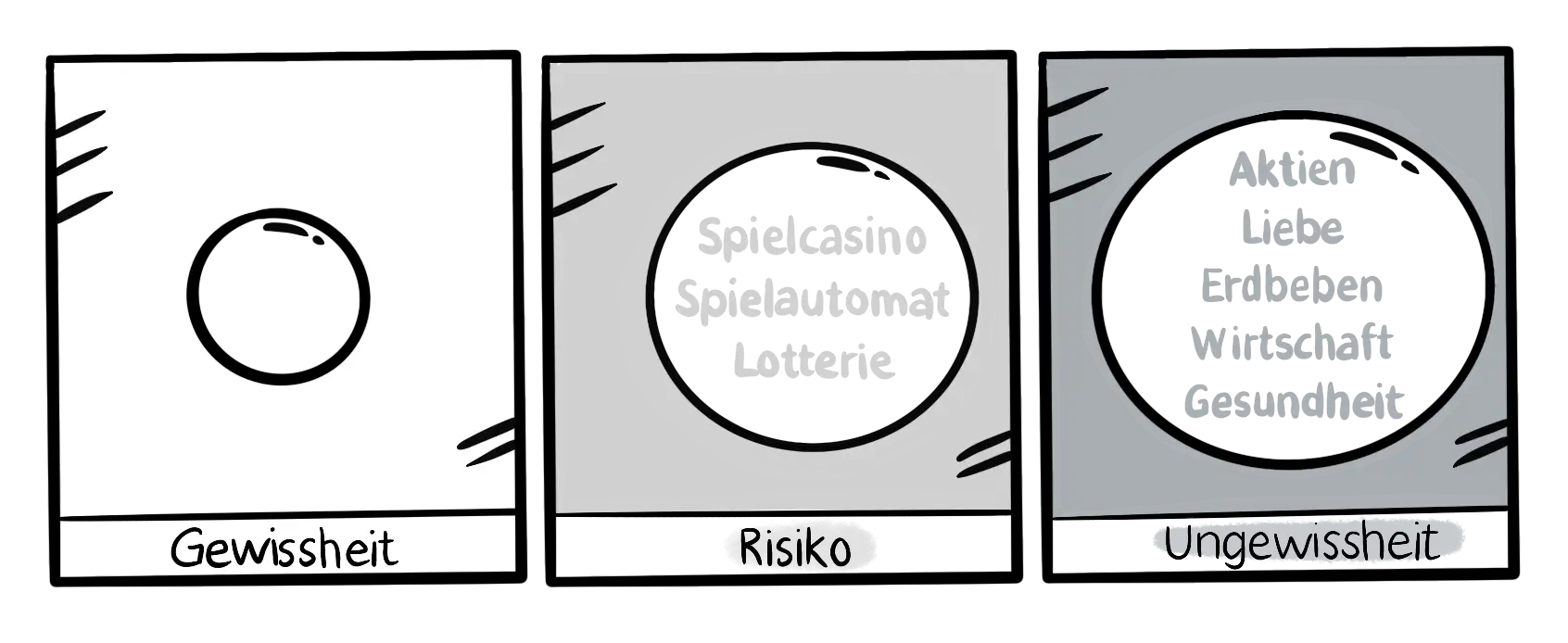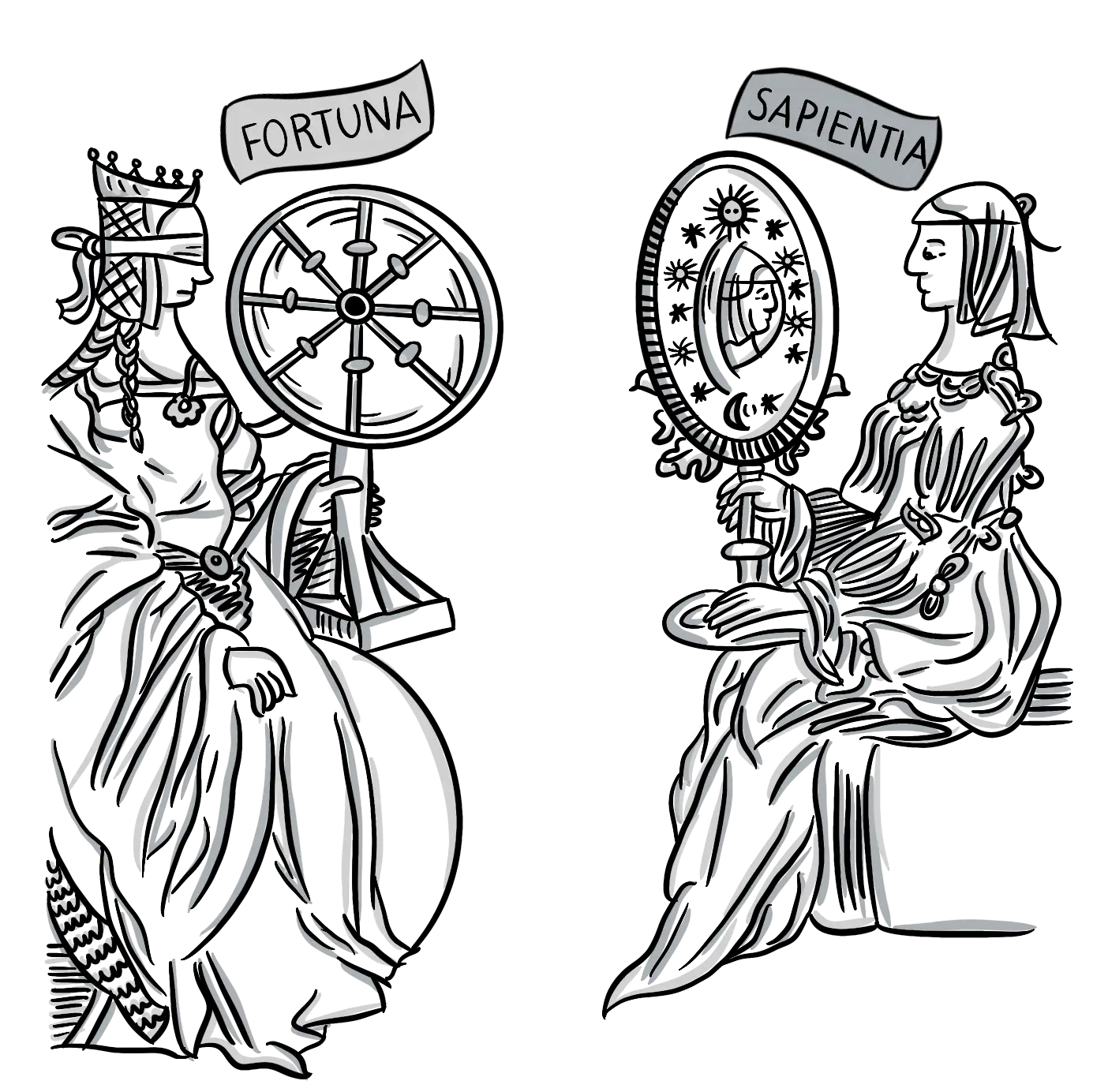Last year, we talked about the megatrend security during one of our Transformation Talks. A complex topic with many facets, which we illustrated during our event. One interesting aspect of the megatrend security is risk perception and the psychological components behind it.
In this article, we would like to dive a little deeper into the topics and address the following questions, among others: How does our society deal with risks? What is the difference between risk and uncertainty? And what do two ancient goddesses have to do with this whole topic?
“Enlightenment is the exit of man from his self-inflicted immaturity. Immaturity is the inability to use one’s intellect without the guidance of another. […] Have courage to use your own understanding.” Once, Immanuel Kant said this quote, he was one of the most famous German philosophers of the Age of Enlightenment. But what does risk – the subject of this article – have to do with Kant and the Enlightenment? Simply put, their connection can be described by the phrase information gathering. Nowadays, everyone has access to information and can, in theory, make use of it anytime and anywhere. This possibility is also described as passive freedom. However, the positive concept of freedom is much more interesting. This refers to far more than only – from the outside given – possibility of a free information access. It means the active commitment of a human being to make use of the available information. Figuratively speaking, passive freedom is a door that can theoretically be opened because it has a door handle. Positive freedom, on the other hand, describes the process of pushing down the handle and actually opening the door. To this day, positive freedom is associated with challenges that reveal themselves, among other things, in connection with the topic of risk. Often, neither experts nor lay people manage to make use of positive freedom and actively build up the necessary competence with the help of risk communication and understanding in order to perceive risks as they actually are.
The German psychologist Gerd Gigerenzer describes our society as “risk incompetent”. He believes that risk competence is one step higher, so to speak, than the risk intelligence on which it is based. Risk literacy is “the ability to deal even with situations in which not all risks are known and can be calculated.” Assessing risks and making them understandable to others is a problem in our society. Complicating matters are false experts’ statements, distorted illustrations of issues due to various conflicts of interest, and distorting media reports.

Since we no longer experience the world in real terms, but perceive it through the media, the media have a considerable influence on the way we obtain information, and therefore an equally great influence on our risk percepetion. Klaus Heilmann, a proven expert on risk research and communication issues, describes this influence in his (German) book “Das Risikobarometer: Wie gefährlich ist unser Leben wirklich?” as follows:
"In general, we would all do well to realize that the information reaching us - especially in the field of science and technology – is always inaccurate, never complete, usually colored and also often wrong. The complex turns into the simple, the relative into the absolute, the possible into the probable – and reality usually falls by the wayside. Taken as a whole, the abundance of information has so far contributed less to clarity than to disorientation."
Klaus Heilmann

The weather report on television serves as a simple but understandable example: “Tomorrow there is a 30 percent chance of rain.” The onset of rain is the risk in this case. The probability is the 30 percent. Sounds logical and absolutely banal, doesn’t it? But what does the 30 percent refer to? Will it rain during 30 percent of the time? Or, in terms of area, will it rain in 30 percent of the affected region? Does the percentage refer to the days for which the forecast was made? So, what exactly is the reference for the probability – time, region, days? Gerd Gigerenzer gives this example in his (German) book “Risiko: Wie man die richtigen Entscheidungen trifft” as representative of the lack of risk competence due to inadequate risk communication and the resulting faulty understanding of risk, explaining: “New forecasting techniques have enabled meteorologists to replace purely verbal expressions of certainty (‘It will rain tomorrow’) or probability (‘It is possible that ….’) with numerical exactitude. But greater exactness has not led to greater clarity about the meaning of the message.” This example clearly shows that risk communication by experts and risk understanding by lay people have gaps and even at the low, mundane level. However, this phenomenon also exists with complex topics and leads to the already mentioned risk incompetence.

Perceiving risks as they actually are. A goal that is probably very difficult to achieve. Besides the hurdles in terms of communication and understanding, the core problem already lies in the definition of the word risk. What is a risk? And how does it differ from uncertainty?
Gerd Gigerenzer writes: “Certainty, risk and uncertainty. In our everyday language we distinguish between ‘certainty’ and ‘risk’, yet the terms ‘risk’ and ‘uncertainty’ are usually used synonymously. But they are not. In a world of known risks, one knows everything, including probabilities, with certainty. Here, statistical reasoning and logic are sufficient to make good decisions. In an uncertain world, not everything is known, and the best option cannot be calculated.” According to Gigerenzer, logic is needed as well as statistics for known risks, but some intuition is also needed to deal with uncertainty in the world. In addition, it is important to consider both terms – risk and uncertainty – in a differentiated way in terms of their meaning and scope and not to mistakenly combine them and understand them as a single entity.

Fortuna and Sapientia: two goddesses in whom people believed already in ancient times. On a symbolic level, they provide an overview of the difference but also the connection between known risk as well as uncertainty. Fortuna is the goddess of luck and chance playing with the wheel of life. Sapientia is the goddess of knowledge and science. Both women are traditionally opposed to each other. In our society today, the values that the goddesses embody also coexist: numbers, probabilities, statistics, and science on the one hand; luck, fate, intuition, and chance on the other. The image of the two goddesses contributes to the understanding of risk and uncertainty. Both terms exist in parallel and have different meanings, but there is still a connection: To understand risk, uncertainty must also be understood in distinction.
Our approach of understanding risks ...
... issues that should be given much more attention in our society. The aspects of this article are mainly based on two German books: „Risiko: Wie man die richtigen Entscheidungen trifft“ by Gerd Gigerenzer and „Das Risikobarometer: Wie gefährlich ist unser Leben wirklich?“ by Klaus Heilmann.